So you’re a top technology company who wants to be seen as modern and ever-evolving — much like the rest of the industry! To stay ahead you’ll need a modern, eye-catching design. Perhaps you want to redesign your logo… Where do you start? A memorable logo can ensure your brand stays top of mind and up to par with big-league competitors. Updating any aspect of your corporate visual identity can be intimidating, especially when making changes to one of the most identifiable features. There are many considerations: How can you establish or maintain your brand identity and form a strong connection with your audience? Do you want to fit in or stand out? How can you modernize your existing design?
One way to begin the process of redesigning your logo is by identifying some “zigs” and “zags” in your industry. Digital branding agencies define “zigs” as companies that follow industry standards and recent trends when designing and marketing their brands and “zags” as designs that opt to stand out in the crowd by moving against the latest trends.
Tech Industry Zigs
Gradient
Using gradients in web design emerged as a hot trend as early as 2016 and has since grown in popularity with no signs of slowing down. There are several companies that have successfully incorporated this trend into their CVI, for example, Stripe, an economic infrastructure technology company. Stripe’s gradient style has become incorporated throughout the brand and website, creating an ethereal and futuristic feel to its services, Instagram can be seen as one of the OG trendsetters, debuting gradient design into their mobile app icon in 2016.


Minimalistic
Another recent trend has been the simplification of logos and website design. Many brands have adopted this trend to streamline their CVI. This branding trend aims to provide a clean and clear brand vision, which is ideal for smaller screens as users continue to shift to mobile browsing. As we shift away from decorative and intricate details that look great on a billboard but cluttered on a mobile device, simple logos stay relevant and readable for modern consumers.
Many major global tech brands have already opted to use multiple iterations of their logo design – DropBox, Atlassian, and Android all now include a single image or letter logo option within their design range.


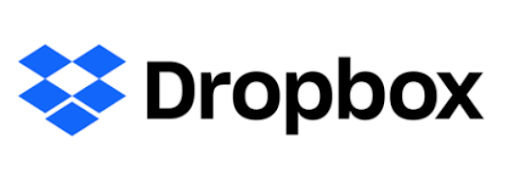
Illustrative
One way to establish a connection with your audience is by designing a unique illustration to accompany your wordmark. A key advantage to this trend is that when done successfully, brands can use the illustration as an identifier without the wordmark. Take Mailchimp’s Freddie as an example. In 2018, Mailchimp simplified their mascot’s design and gave him an established spot next to the logo.

Tech Industry Zags
Fine Line Detail
While many tech companies are moving in the direction of simplification, some are going against the grain. One example is cloud migration software company Cloudreach, whose finger-print-like logo detail denotes security and reliability at first glance. Using fine detail has its advantages. Detailed designs can speak volumes about your brand value and tone. Especially in the technology industry rich with complex products you may want your logo to symbolize unique detail and features of your products. In contrast, simplified designs may be preferred to make complex technology more approachable to everyday consumers.
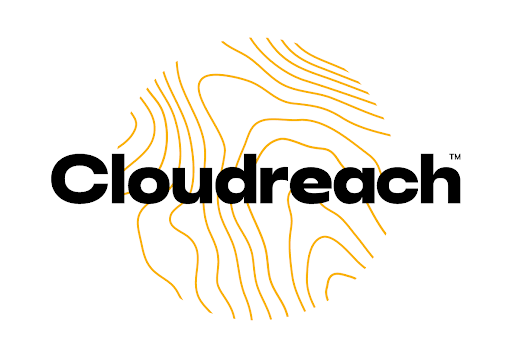
Anti-Marketing
Most technology-oriented marketing campaigns inspire the target audience to use the advertised product or service as much as possible. This statement holds true for most companies looking for customers to download and use their mobile apps. This is also where you can differentiate your campaign to stand out amongst the rest. For example, the newest campaign from the popular dating app, Hinge, inspires it’s the target audience to delete their app. Yes, you read that right. That may sound counterintuitive, however, it guarantees a different approach from their dating site counterparts, who focus on their service being the best at finding love for its users. Hinge’s campaign, instead, inspires its users to find love and delete the app.
Of the campaign, Hinge CMO, Nathan Roth, said “It’s quite common for apps to optimize for time in-app, whether it’s to maximize subscription or advertising revenue. We are purely focused on our users’ success and that’s helping them find someone worth deleting the app for. That’s our single focus,”
Interested in learning more about the zigs and zags of the technology industry? Contact us.
In recent years illustration has evolved far beyond traditional child’s play. The classic art form that many people associate with children’s books actually has serious B2B benefits.
More and more, illustration has become a focus of company web pages, getting more unique and colorful with each year. Illustrations can be a powerful tool in brand storytelling and avoiding the potential pitfall of cheesy stock alternatives. They can provide your customers with an approachable introduction to a brand, while also reinforcing design styles or colors key to your visual identity. For many B2B companies, illustrations have become an essential component of customer-facing imagery.

Here at Bluetext, we see a variety of purposeful illustration styles. Two of the main objectives for B2B companies seeking illustration is to visually describe abstract products, or depict meaningful customer experiences. For many industries, such as tech or cybersecurity, showing literal subjects or end-user experience is not possible through photography, therefore, illustration is an ideal solution.
Below are some of our favorite illustration themes used to take clients’ business goals to new heights.
Flat
There’s no reason to shy away from simplicity! Flat illustrations have been a huge trend in 2020, with many major companies including GoDaddy, Mailchimp, and Slack implementing them into their brand designs. This illustration style is most often used to depict people or experiences. Stock photography tends to favor extremely generic scenarios, or let’s face it, painfully boring subjects. When your business wants to highlight a specific experience or incorporate as much branded detail as possible, custom art may be the way to go. Illustrative styles offer far more flexibility and adaptation, without falling flat.
Bluetext produced flat illustration styles for Centauri’s employee engagement campaigns to depict unique company events and contests that stock photos could not.



3-Dimensional
Bluetext’s work for Cvent brought custom illustrations to life in a 3D animated video. Intended to immerse the viewer with a preview of the event experience, graphic designers and animators transformed human illustration into a realistic simulation. With this stunning visual design, Cvent was able to digitally communicate their in-person experience to remote viewers and translate their business value in the most powerful manner.
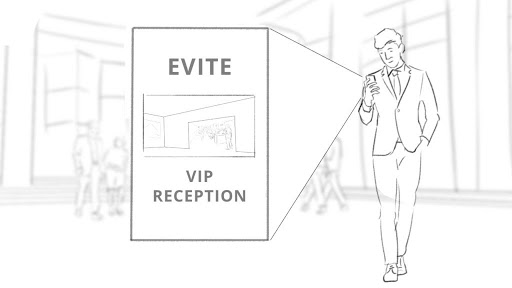
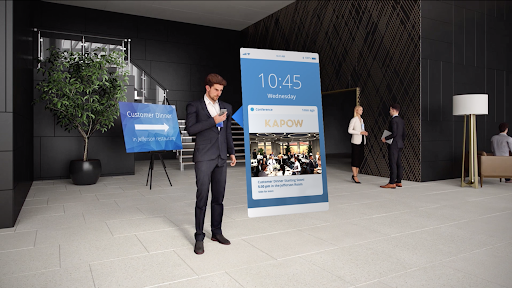
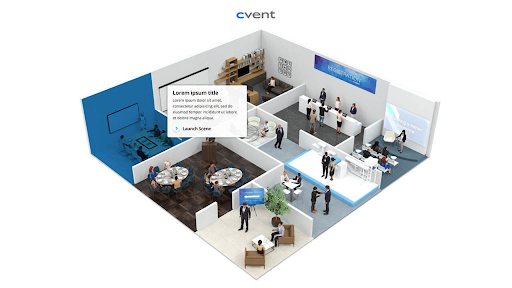
Sketch
Bluetext’s work for GMAC, Graduate Management Admissions Council, promotes graduate school admissions in an approachable and digestible manner. Stretch illustrations were used in the revamped CallingAllOptimists.com campaign to inspire people motivated to improve their future opportunities into action. Juxtaposing a serious life decision and often anxiety heavy admissions process with a uniquely, optimistic brand identity captures both the courage and the celebration of the end-user. Illustrative styles complemented real photography to provide a snapshot of the user, decision factors, and end result.


Monochromatic Gradient
In another successful campaign for GMAC, Bluetext designed custom humanistic illustrations to represent user personas. In awareness of a wide breadth of audience targets, the campaign opted to show a variety of potential applicants in a range of career stages. To resonate with a potential applicant, it was key that they could imagine themselves pursuing a graduate degree. To avoid isolating any potential audience members, Bluetext’s custom illustrations avoided biases of race or ethnicity by showing monochromatic styling of men and women in post-grad, young professionals, and even in established careers.



Product Illustration
Another top use case for illustrations is product depictions. Especially in service-based or digital industries, it can be a challenge to accurately depict what you’re selling to customers. Bluetext client RevBits, a cybersecurity software and service provider, overcame this obstacle with branded product illustrations. With a complex product lifecycle, visuals helped conceptualize their cybersecurity offerings in a clean and user-friendly format. Especially on webpages, product illustrations were an ideal way to communicate offerings to users scanning a webpage and without the time or desire to read long paragraphs of text. The illustrations utilized key brand elements such as color palettes and iconography to maintain a consistent brand experience throughout the website.

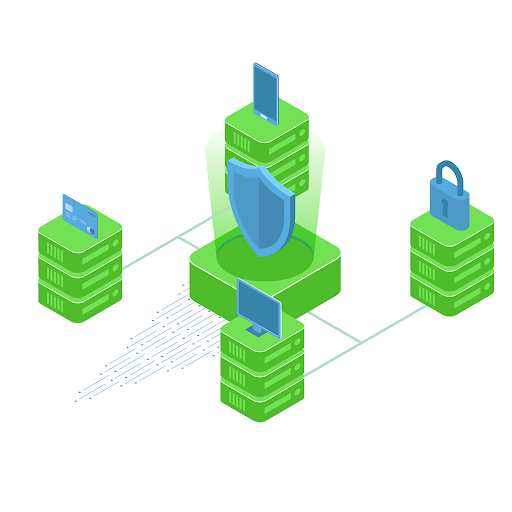

Digital illustrations are catching a new wave of excitement from companies across all industries. With an ever-expanding range of use cases and applications, we predict this will quickly become one of the most effective ways for B2C or B2B companies to start a more emotional conversation with users. With the rise of personalization and hyper-targeting, establishing warmer and more “human” relationships with clients and customers is a proven way to strengthen loyalty and improve overall ROI.
Interested in exploring the potential of a rebrand (or illustrations!) for your business? Contact Bluetext today.
Welcome to 2020, a year of new normals, routines, and best of all, new logos! The logo design trends in 2020 thus far have been an intriguing remix of new and old. Logos have taken a trip back in time to a variety of eras, while also remixing modern styles. We’ve seen the gamut of design trends; from neon 80’s juxtaposed against inky, to futuristic 3D gradients and custom animation.
The key theme of 2020 logo design has been a digital-first focus. Many brands have modernized their logos for optimal web and mobile displays. For example, the popular gradient trend has evolved and merged with 3D design —a perfect fit for our smartphone society.
3D Gradients
Gradients are a unique way to blend any group of colors into a dynamic spectrum that exudes life and energy. Gone are the stark striped color transitions, as some brands have opted for a more subtle and gradual shift. This year, designers will give rise to the newest evolution of gradients creating depth and 3D effects in logos. Other top branding agencies are experimenting with new trends such as tapered gradients—ones that come to a central point and actually emphasize the contrast between their colors.

80’s Retro
Don’t thrift away your 80’s style just yet, because some fads never go out of fashion. Enough time has finally passed for all things 80’s to be cool again: video games, pop music, and the rebel attitude associated with them. In 2020, logo design agencies expect to see a resurgence of throwback logos accented with chrome, neon, and a lot of digital pixels. These styles give a nod to the old-school tech that preceded the glowing iPhone and laptop screens our eyes are glued to today. Nostalgic marketing has made a huge comeback in recent years, necessitating a cool, retro logo to accompany any throwback campaign. Throwback logos are popular because they capitalize on consumers’ nostalgia of old-school 80s tech, which is widely known to be retro, cool, and most importantly, collectible. Some logos reference nostalgic 80’s items by literally depicting the old school cassette tapes, arcade games, etc. Others embrace this trend with 80’s typography and design trends, like GV’s logo for LI Mowz.
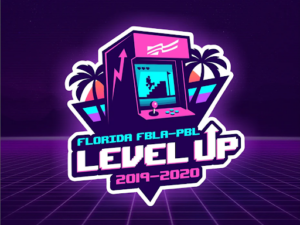
Ultra Thin Lines
In 2020, high definition is leaving its mark on logo design. Designers push the envelope with extremely delicate lines, creating effects that can only work in the digital media. With extremely detailed linear patterns, logos began to feel ethereal and surreal — much like the original perception of radio and transmission media. With the new ability (and COVID necessity) for some brands to exist exclusively online, previous print limitations are eliminated. In an age of high-resolution screens and defined displays, complex line design makes classic logos seem elementary and easily reproducible.

Multi-Layered
2020 has been all about complexity! Logos are going deeper than ever before using artfully layered color systems. Especially with new digital affordances, designers are reverting flat and semi-flat designs to build depth through color layering. While shapes and colors remain simple, their relationship has intensified. By adding additional layers, designers create complex logos with highlights, shadows, and overlapping colors to communicate the brand brands. Especially on digital screens, the ability to create three-dimensional effects creates a unique, almost tactile experience.

Animated Logos
Top design agencies have been producing logo animation for some time now, but in 2020 we’ve seen more detailed and innovative plays on animation. Previous logos have been limited to simple movement, but over the years technology has allowed for more intricate and purposeful movement. Especially with a growing digital audience, animated logos can be more eye-catching and practical to the brand story. A popular 2020 logo design trend has been the blending of 2D and 3D animation or logos with multiple moving parts. These complex logo animations aim to take the viewer on a journey and tell a story. With lots of details to look at, the viewer looks at these logos longer than they’d look at a more simple logo animation and can potentially find something new they like about it every time they see it again.
The move toward animated logos comes from a similar place as the tapered gradient logos trend: when you’re designing for screens, there’s a whole lot more you can do as opposed to when you’re designing for print.

The logo design trends for 2020 will continue to build on everything designers have been exploring in the last few years, while also taking the design in directions that are totally new, totally fresh, totally right for an all-new decade. Let’s take a look at the top logo design trends that are already defining 2020.
When building and launching digital campaigns, many of the key determinants of success are evaluated through digital engagement measurement and tracking. However, as websites and ad-tech have evolved in recent years, so have protections and privacy policies. It’s easy to write off the need for a comprehensive privacy policy, however, this is a recipe for disaster in the age of big data regulation and enforcement. To avoid the FTC and International regulators ire, digital agencies such as Bluetext recommend taking data privacy measures that cater to the most comprehensive regulations in effect.
For businesses with users outside of the United States, being aware of the General Data Protection Regulation (GDPR) and similar legislation is an essential consideration. The GDPR has created strict provisions for EU web users’ privacy and data rights, which extends to US browsers. As global privacy legislation evolves, North American businesses that handle global users’ data must comply with current regulations and build with an eye on future compliance. Top digital marketing agencies advise and design campaigns and websites with these policies in mind to provide frictionless engagements.
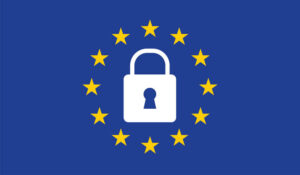
What is the GDPR?
The GDPR is an extraterritorial set of provisions that updated Europe’s data protection standards. The privacy policy strengthens the protections set in 1995, adding requirements for greater transparency and disclosure to users, in addition to modernizing the “cookie law” of 2002.
The GDPR goes beyond earlier regulation, focusing on personal data protection regardless of the type of data and how companies must document user consent in a transparent fashion. These protections apply to all persons browsing within or originating from the European Union.
The term “personal data” is not synonymous with “personally identifiable information”, or PII. PII has traditionally been a legal concern for American businesses, and it refers to a more defined set of information than the GDPR model. PII does not have to be context-specific to be regulated, in contrast, the GDPR emphasizes the consumer risks of data aggregation.
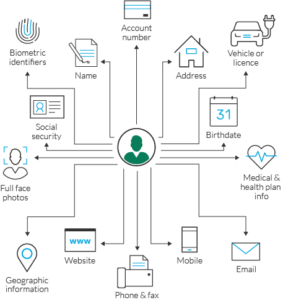
My business isn’t located in Europe, why should I care?
The GDPR’s reach is far greater than the medley of privacy protections in effect across the United States. Violators of the regulations risk penalties of €20 million ($22.6 million as of writing) or 4 percent of global annual revenues for the preceding fiscal year, whichever is greater. Comprehensive legislation at the state level in the U.S. has been varied, many forward-thinking businesses are beginning to take steps to adapt their practices to comply with the California Consumer Privacy Act (CCPA). Ultimately every website will have to comply with some set of standards, so it is wise to be proactive and implement privacy protection now. Top digital marketing agencies such as Bluetext are taking steps to protect against potential violations of the CCPA and GDPR by changing cookie collection practices, recommending new data collection practices, and designing clear consent forms.
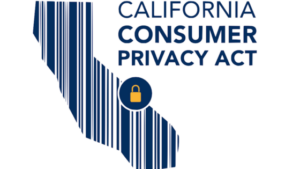
Changing privacy policies impact sites from the bottom up, starting with development and design
In a digital-first world, data is a critical component of many businesses online and offline strategies. With the implementation of the GDPR, marketers and web developers must be more diligent about what data we collect, the means by which we collect it, and how we handle sensitive information. When building or updating websites, web developers, and digital project managers should take this as an opportunity to rethink how sites can be more transparent and adopt the Privacy by Design framework.
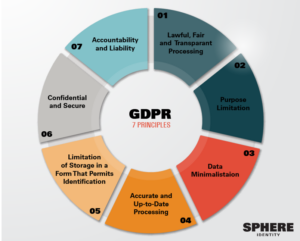
The Privacy by Design framework highlights design-thinking approaches to development prior to launch to eliminate the need for post-hoc privacy fixes once a project is live. Solutions such as making privacy the default setting for site visitors, making privacy standards visible and open, and giving users specific privacy information notices are easy considerations to add to the development plan.
If your site is already live, consider a development sprint focused on auditing areas of potential weakness. In assessing your data hygiene, your team can look for unsafe or unnecessary modules that can be disabled, particularly those found in APIs and third-party libraries. Adtech integrations may help source leads and retarget with better precision, but validating that their pixels and tracking are in alignment with GDPR best practices is essential.
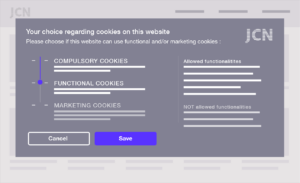
The aesthetic design of websites is also impacted by changing privacy practices. GDPR consent requires clear and explicit opt-in notices to users. Designers, user experience experts, and marketers should work collaboratively to update existing landing page components to incorporate new disclosure features. One simple mantra to internalize in the design phase? Offer accessible, clean choices around cookies and pixels.
When building clear user permissions for data capture, the GDPR requires that websites define data retention and deletion plans for all the personal data collected. Adding GDPR conscious logic to scripts at the code level of your site can save time for site custodians and business analysts alike in the future.
Updating best practices for common marketing tactics and tools
Updating the fine print on your Privacy Policy is just the first step of complying with new regulations; common marketing campaign tactics such as cookies should also be rethought through the lens of compliance. Cookies are the small data files that can be placed on users’ browsers and provide a trove of useful insight to website operators. Under the GDPR, businesses are legally liable for any activities on their sites, specifically protecting user data from third-party cookie tracking.

Many businesses use cookie tracking to better measure the impact of their marketing strategies, and they combine tracking with other user data to build user personas. While this has been an accepted practice in the past, the new regulation now requires clear permission from European users to collect this information, whether the site is for an American or French company. As noted in the impact of GDPR on design, cookie usage has to be explained on either the homepage or a second-level page on the navigation. This immediate opt-in should allow users to understand how their data is collected, the purpose of the data, and how long they are consenting to these cookies.
As a website operator, sites must withhold all cookies and trackers on your website until you have received clear and explicit user consent on each type of cookie and tracker. This consent has to be given freely, described in explicit plain language, and users must have the ability to withdraw consent. The rights of users under the GDPR are extensive — to comply, website custodians must update their privacy policies and opt-in tools.
This sounds like a lot of work, why should I care?
Ultimately, thoughtful privacy policies, development, and design provide a safeguard for both businesses and users. The GDPR gives consumers new rights to access and manage their data on digital platforms, and businesses that do not adapt to meet these regulatory requirements can face steep fines. While these changes can seem overwhelming, a top digital marketing agency such as Bluetext can guide your business through the murkiness of data privacy design and compliance.
In the past few years, the option for “dark mode” has become increasingly popular as our time spent on-screen steadily climbs. Dark mode is a display setting on a computer, tablet, or mobile device that allows the user to view their content with a predominantly dark theme, compared to the typical white background we find on most websites and apps. So what is the purpose of this change? UX research shows that dark backgrounds enhance page contrast, making visuals pop and easier for the user to focus on.
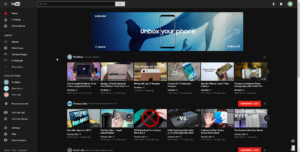
Early adopters of dark mode will remember when it was only a one-off feature, offered exclusively within certain mobile apps. Slowly, as time passed and more software updates were revealed, operating systems like iOS 13 and Android 10 offered a dark mode option that applied device-wide; making the switch for all of your default apps (i.e. your notepad, weather, and more). Now that dark mode is more widely available on our top visited apps like Instagram, Twitter and soon Facebook, many website designers and developers are wondering if a dark mode option is right for their site.
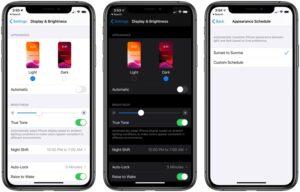
Is Dark Mode for Me?
There are a number of factors to consider before adding a dark mode setting option on your site. The trendiness vs. the more concrete usability points is the main question to ask yourself. What is the goal of your site? If the focus is on the style and design, it makes a better case for a dark mode implementation. There is evidence that users viewing content in dark mode are able to more easily focus on the visuals on screen, over the content. Dark mode is ideal for distinct CVIs or attractive product imagery. If brand awareness or e-commerce is your site’s main focus, dark mode may improve page performance. If a KPI is more content driven, focusing on conversions and leads, dark mode might not be a critical feature.
Web developers should also be aware of the time needed to implement a dark mode option—both initially and to factor it in with future updates. If the project is already on a timeline with a quick turn around, it could be better to revisit the integration as a post-launch add-on item.

Consider Your Users:
Two key end-user benefits stand out when considering dark mode for your site:
- The highly convincing argument that it may be easier on the eyes. This is pretty self-explanatory. Users are becoming more aware of daily screen time and actively seeking out ways to maintain a healthy balance with technology. For instance, Apple recently released Screen Time, allowing users to track the amount of time spent on their devices. Though it is not the responsibility of web designers and developers to look out for users’ natural light-dark cycles and circadian rhythms, it serves as an added bonus to offer your site visitors a dark mode option. Think of it this way: the easier on the eyes, the longer your visitors will stay on the site.
- It can improve device battery life. That’s right—some developers claim that dark mode consumes only a fraction of the percentage that using a site or application takes from your battery, saving your users time between charges.
With the rise of digital personalization and online interactions, it’s important that your users feel your brand has their best interest in mind. Especially when attracting new users, these subtle enhancements to their experience can make all the difference. Ultimately, dark mode is largely an aesthetic decision, so you’ll want to think through how to integrate this with current branding.
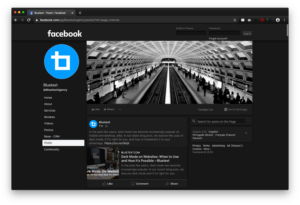
Recommendations for How to Use
If you decide to include a version of a dark mode integration in your site or app, here are some additional recommendations to use as a guideline. Start by establishing an alternate dark mode color palette for your brand. Since your users will be more drawn to the visual aspects of the site while viewing a darker background, make sure that none of the brand colors you’re using are too saturated or too bright in contrast to the dark background.
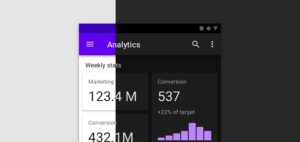
The development team should explore the options for adding additional theming options to your site using custom CSS classes on existing code. Decide whether you will allow your site’s visitors to choose their display options, revealing a dark mode theme, or if it will be automatically based on their browser settings, and even other in-app indicated preferences if designing for a mobile app. The best option being that whatever you decide for the user’s interaction with it, it should closely resemble other display settings and theme updates available on your site. If these are not present, recognizable icons, like a light bulb or sunshine (for light mode) and the moon (for dark mode) are acceptable for a quick turn-on turn-off functionality.
As the popularity of user-end site personalization options increases, rely on these helpful tools to help the decision-makers on your team in their choice to join the dark mode movement.
Best Practices for Conversion Driven UX Design
If your company has a website published in the public domain, chances are, you know a thing or two about conversion goals. Conversion goals help to measure marketing performance, set goals and most importantly, provide conversions for a company. On websites, conversion goals can range from lead generation to sales to even page views. The point is, you must find your conversion goal and optimize your website toward it. There are various design choices that are simple, yet efficient in achieving different types of conversion goals. The goal is to keep it simple – the lesser the cost per conversion, the higher the return-on-investment (ROI).
Hack Your Way to Higher Conversion Rates
Less is More
According to CEO of Chartbeat, Tony Haile, “You have just 15 seconds (or less) to convince new visitors to stay through the power of your site’s design alone.” Compared to years ago when web-design trends were over-the-top and animation and flash were all the rage, clean and simple flat designs are what reign supreme today. Market trends indicate today’s consumers appreciate a nice, clean layout. Impress your visitors with your content and offerings. Bombarding them with unnecessary flash and animation not only annoys them, but it also slows down the load time of your website. Whatever you do, don’t mirror your site after this masterpiece. You can always check the speed of your website using Google’s PageSpeed Insights tool. PageSpeed Insights analyzes the content of a web page, then generates suggestions to make that page faster.
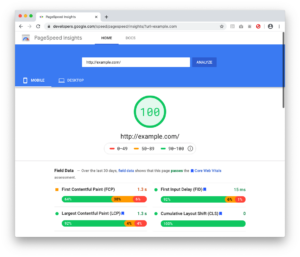
Fire Excessive Fonts
When a user lands on a site with various different styles of old and new fonts, it becomes a disjointed and confusing user experience. If you’ve got more than two or three fonts on your homepage, trim them down to create a more modern look. Having two primary fonts keeps your website consistent and organized. While you’re at it, consider increasing your font size for readability. Smashing Magazine reported that “anything less than 16 pixels could impair your site’s readability.” Your website should not only be consistent but also readable.
Give Content a Break
Put yourself in the user’s perspective. Nothing is more intimidating and scary than landing on a page with big blocks of unbroken text. You would bounce too! Large text fields are an immediate red flag that digesting the material will be time-consuming and complex. Mix it up and improve your site’s readability by adding headings, subheadings, bulleted lists and numbered lists to break down content into easily-digested segments.
Improve Your Visuals
While you’re thinking about breaking up content, consider adding imagery. Customers or prospects may need to literally “see it to believe it” and images can be a powerful tool to help contextualize value. Custom graphics and visuals are a great option that is sure to impress users. Cheesy stock photos can seem generic and off-putting, so consider upgrading to simple tools like Canva and PicMonkey which make it easy to customize your images. In addition, if you’re looking to generate confidence in your service or product, try human photography. According to various studies, images of human faces can have a positive image in driving contact form conversions. Remember, people trust people! Human faces help establish an emotional connection, which in turn makes your website a more personalized experience.
Trust in the Numbers
While imagery and human photography might make a subconscious impact on trust, seal the deal with statistics and testimonials. People inherently trust in data and social proof. Statistics can help rationalize and solidify the decision-making process, especially when compared against competitors. Highlighting elements of social proof is an extremely easy and effective way to drive conversions. Consider positioning this information higher on the page, or perhaps in eye-catching designs, so users can be sure not to miss it.
Always Open the Window
Outbound links are a critical component of the ideal SEO formula, but be sure never to lead users away from your site. Make sure that all external links open in a new window. This ensures not only the best user experience for the user, but your site will stay open and users won’t drop off in search of content elsewhere.
Make it Stick
Add a Contact or Sales call-to action-directly in the main menu. Keeping the main conversion at top of mind (and menu) ensures your users are always enabled to contact you. You would never want a customer or potential lead to finally be ready to convert, only to be lost in the site and unable to contact you. To really make your central call to actions stand out, consider implementing a sticky navigation. This means that the main menu will lock in place above your content, no matter where the user is on the page.
Need to make changes to your website to improve your navigation? Bluetext can help.
Learn your customers. This is not news to anyone in sales, but the more you understand about your audience, the better you can appeal to them. With more and more sales moving to digital, companies need to invest in digital empathy and offering a personalized brand experience is the way to go. Gartner agrees, that this is the year that personalization can enable up to 15% more profits for companies who re-engineer their content strategy to align with customer intent on a case-by-case level. For instance, a questionnaire that simultaneously tracks their answers and interests while drawing them to your critical on-site content that aligns with those interests is a win-win. In the end, your customers are satisfied immediately when, after a few clicks, get what they need on a personalized listing page or action report, especially if you gate it, and you understand your customers in real-time. Raise your hand if you want to be a trusted consultant and thought leader with great top of funnel pipeline…
Peak Interest. Peak Opportunity.
You’re being overmarketed. That must sound strange coming from a marketing blog, but the truth as we see it is that there is more noise out there than ever and digital ad-apathy is stronger than it’s ever been. So how can marketers cut through that noise and get their foot in the door? Lead generation today is about taking the time to tailor and target the message to the right person. It’s important to balance marketing automation with personalized lead-by-lead outreach. Is it time-consuming? Absolutely. Is it worth it to increase your ROI? Absolutely.
Marketers overwhelmingly agree that personalization is a huge benefit for developing and maintaining customer relationships. According to Adobe 60% of us are having trouble trying to make the switch to personalized content, but 90% of marketers recognize that their target audiences expect a personalized experience.
So what change is happening to boost marketers’ confidence in 2020?
Empirical Empathy.
You may have the creative personalized ideas, writers, designers, and web developers ready to help go to market, but until your business has the right data to drive your GTM ideas, you might be starting from scratch. Instead, companies who cultivate all of their customer data together, including customer journey tracking, cross-platform reporting, and aggregating lead generation trends across their web, mobile, email, and social channels will find the personalized insights they need to succeed. Harness the bountiful (and cheap) organic user information, across multiple data platforms, into one cohesive customer profile. Then build your storytelling experience, quiz, or dynamic CTA button around what you’ve discovered about your users. Turn your expensive anonymous users into cheaper hyper-targeted users through a foundation of data and let a personalized marketing experience reap the benefits.
On average, marketers within companies store their customer data in at least four different systems, most of which are not shared or have no way to make meaningful connections. Dramatic investments are in store for whatever integration, platform, or process can unite the omnichannel user data and enhance data analysis. Start with implementing data-driven objectives like:
- Location Data
- Overlays
- Survey Responses
- Ad Campaign Interaction
- Tag and Filter Results
- Track Pageviews
- Smart Lists
- Dynamic Content Blocks
- Link Clicks
- Referral Source
With this precise user understanding at marketers’ fingertips, we enjoy the familiarity of personalized campaigns. Yet culling that data together and offering a message or experience to the potential lead based on their previous interactions with your company is vital to getting that foot in the door. Invest in understanding your audience and their behavior and interests and they will invest in understanding you.
Email is Still Mail.
Let’s face it, our inboxes aren’t overflowing with personal communications from friends and loved ones. That doesn’t mean email marketing has to be impersonal. So how do we get a user to click on that one email subject line when they return from vacation to a mailbox full of ads? Personalize your headline copy, customize imagery by location, gender, or season, and insert dynamic CTAs to make the offer relate to what you know about them. Make it pop!
Bonus – add additional personalized flair to your brand experience by implementing a kickback email upon conversion. The most common form of a kickback email is an automated thank you note sent to their inbox once their personal information enters your CRM. Higher engagement rate – check. Great first impression – check. Polite digital etiquette – check.
You’re on the Right Landing Page.
Let’s say you’ve finally convinced the user to engage with your content and click on the CTA button, you know you have their full attention. Making a personalized first impression when they arrive on the landing page both affirms that they are in the right place and encourages them to remain there. In the Calling All Optimists case study, the media campaign was designed to match the messaging that worked in the first place to pull double-duty by complementing the interest on the landing page. Driving the target audience to the site, the user is met with a unique welcome message in the hero-zone correlated to the specific ad they engaged with.
Personalizing your page ensures that traffic from all over the world sees the most appealing content for them. Whether it’s one of your homepages (yes – the more the merrier!) or a campaign landing page, every page should have a purpose correlating to every unique visitor and their previous exposure to your brand.
Make It Personal
Stand out by personalizing your digital reputation. Customers will remember your services, your messaging, and your products if you direct them to what makes sense for them, rather than sending them on a wild goose chase. Content marketing has been top of mind for this industry for years now, but personalizing that content marketing strategy is a way to make your brand feel exciting and special.
It’s time to say goodbye to cookie-cutter content passively thrown into your resources listing page and keeping your fingers crossed that someone stumbles into it. With social media engagement on the downfall and Google’s algorithm prioritizing their own thought leadership over yours, it is imperative to transform your strategy into something that appeals to your ideal customer. Two-thirds of consumers say they will switch to brands that treat them like an individual rather than a data point, a trend that will continue to be driven by younger audiences who value brands that are transparent, authentic, and personal.
No matter the tactic, the fundamental purpose of personalizing any campaign is to boost engagement by telling the user you understand their need. Communicating your own message by listening to their needs first will always prove to be worth the research, planning, and testing effort. Delighting the modern consumer is going to take some analytics-grit, but doing your marketing homework before investing in any large personalization initiative will pay off in 2020.
If you’re looking to digitally personalize your content, reach out to Bluetext to help you succeed.
Your website acts as an essential business tool — used across every industry for a diverse number of functions. B2B companies rely on their websites to generate leads, phone calls, or physical location visits. No matter what function your website serves, there is one universal goal every business wants to accomplish with its website: leveraging it to create more growth.
There are several ways to increase your leads, sales, and revenue without investing in a complete redesign and rebuild. A great website will enable your team to work smarter, not harder. Here are tips that you should consider trying — while simple, they can help your business grow significantly.
1. Responsive Design
Mobile accounts for over half of global website traffic; if your site isn’t mobile-friendly, you may be losing valuable leads. In the coming years this number will only increase, and ensuring a mobile-friendly design may be crucial to your future success. A responsive website design (RWD) adapts to fit any screen in a way that makes all pages, features, and actions accessible to users. Making sure that your website can support traffic on any browsing device ensures that users are not dropping off your site because they cannot access what they’re looking for.

2. Simplify Your Navigation
In order to increase conversions, you need to keep users on your website. When a user lands on your website, they should be able to quickly and intuitively navigate to relevant content, allowing them to find the information they need without losing interest. The first step to keeping a user on your site is maintaining a simple and intuitive navigation. Too many options will likely overwhelm your user; it is important to have a clear path for users to the action you would like them to take as well as the information they are looking for. Otherwise, they may look elsewhere.
3. Avoid Clutter and Complex Noise
While incorporating animation and motion on your website adds visual interest for users and helps your site stand out, it’s important to be aware of the balance between unique design and overly-complex noise. Too much movement can be overwhelming for your user and may detract from what they originally came to your website to achieve. A complex design can also negatively impact your site speed, potentially increasing bounce rate and affecting your SEO score. While finding a middle-ground between these two extremes can be difficult, it’s important to ask if new design elements will add value to the end-user.

4. Don’t Go Crazy With Your Fonts
While fonts are an easy way to enhance your CVI and bring visual interest to your website, they may also be difficult to read for some users or on some devices. Using a Sans Serif font for your website’s body copy and making sure the font size and color meet accessibility standards is crucial in getting your message across to users. If they are not able to read the content on your site, they definitely won’t be converting.

User experience is crucial to effective website design, but so is your internal team! Here are some tips to streamline the digital sales process for end-users and internal teams. A positive user experience will directly translate into increased conversions.
Use Call Tracking
If driving users to make a phone call is one of the main goals of your website, it is important to know which page has prompted the user to make the call. You can easily track this information by using unique phone numbers on different pages, allowing you to determine which page is driving the most traffic to your call center. These numbers can easily be configured to route to your main phone line, meaning there won’t be any disruption to the way you’re currently handling phone leads.
Install Live Chat
While live chat may not seem immediately relevant to your business, every website can benefit from this simple tool. Live chat functions to facilitate interactions with your users and enables them to quickly get the answers they’re looking for without spending too much time hunting around the site. Many chat services will also integrate with mobile phones, allowing your business to easily monitor traffic.
To learn more about driving leads via a responsive UX design and how Bluetext can help you increase conversion rates, contact us today.
Have you ever found yourself on a website, staring blankly at the screen wondering where the rest of the pages are? Navigation is one of the most important functions of any web page whether it be a blog, product listing page, about section, or a document library. If your user doesn’t know where this content is housed, the utility of the information is lost! As a crucial element of user experience, failing to build smart navigation into your digital interface can lead to a variety of issues including secondary UX issues, accessibility problems, and increased bounce rates from frustrated users.
Let’s take a step back; what is a navigation menu, and do I still need one if I have “search”?
Navigation menus are maps of the categories or features of your content; on websites, these are known as sitemaps. These menus can appear in a variety of ways; from the traditional header locked navigation bar, to hamburger menus that pop out to link to various interior pages of a website.
While many websites have a Search function of some kind, whether it be a search bar or filter, research shows that 70% of users rely on navigating to content directly. While search features are helpful to some users, navigation menus can lead your visitors to the content they need quickly and reliably.
No matter where you are with your website, here are some quick, easy tips to help you optimize your platform for a better user experience.
1. The 3 Click Rule
Your navigation structure should be intuitive and allow users to land on any page and find what they are looking for in 3 clicks or less.
If your site has lots of content and sub-pages that relate back to a greater unifying category, take advantage of breadcrumbs. Breadcrumbs are a component of navigation menus that help users orient themselves within a sitemap. They can be embedded into the navigation bar as a dropdown, or appear in the design of the child pages on your site to guide users through the various layers of content.
2. Show Off Your Menu
Don’t try to reinvent the wheel-don’t hide your navigation menu! When a user visits your site, it’s likely one of the hundred other web properties that they have browsed in the last few days. As our digital lives have progressed, users have become accustomed to certain kinds of queues and user interface (UI) elements. Keep your navigation menu in an intuitive location, be that the left rail, top of the browser window, or a pop-out hamburger menu with an obvious icon.
3. State the Obvious
Be as clear and descriptive as possible. Avoid using vague descriptions in your navigation headings. If a user can’t tell exactly what to expect from a page in the navigation, there’s a chance they won’t make it past the landing page. Use descriptive language to identify what your pages contain, less is more with heading titles. Streamline the main menu display experience where possible and take advantage of dropdown menus for categories with multiple child pages. If you hyperlink to pages within your site from banners or in-line content, make your hyperlinks obvious!
4. Stay on Topic
Don’t let SEO impact your navigation taxonomy. While ranking well in search engines is important, packing your Headers and menu items with keywords that don’t relate to the page contents won’t do you any favors with users. Avoid this common pitfall by using the copy and metadata on your pages for SEO strategies, leave your headings and menu items clean and accurate for better UX.
5. Lead with a Mobile-First Mentality
Over 53% of all web traffic occurs on mobile devices. When designing your navigation menu, start by thinking about how users might visit the site; on both their computers and mobile devices. Take advantage of responsive designs that can adapt to a variety of browsers and devices rather than discovering post-launch that your navigation is broken.
6. Stop Guessing! Test Your Audience
If you’ve updated your navigation menu but still see disappointing numbers for bounce rate and click through on your site, test your experience. User behavior can be monitored with tests such as a Crazy Egg Heatmap, which illustrates where your users are browsing on the page.
TLDR: improving your navigation design can improve your relationship with users
Confusing or obscure navigation will lead to fewer visitors to your interior pages and can result in awful analytics reports. Clear and effective navigation can enhance visitors understanding of where your content is located, instill confidence in browsing your site, and create credibility about your product.
Do you need to up your navigation game but you’re not sure where to start? Get in touch with us.
There’s no denying it. Our society is more digital now than ever. You, me, your neighbor, your neighbor’s neighbor… we are all online. Most importantly, your prospective clients are online and are ready to consume high-quality digital content.
Now is the time to invest in your website and make it more user-friendly for your audience. There is a lot of low-hanging fruit to improve your site, ranging from basic content updates like changing imagery and posting blog posts. Or investing in more impactful measures such as consulting top digital marketing agencies to understand the most cost-effective way to improve your website.
So what exactly will make your website user-friendly for today’s content consumers? Many UX designers will tell you that you should either keep your users either scrolling or clicking from one page to another within your site. So which is the better user experience? To scroll or not to scroll?
Keep reading (and scrolling) to understand why scrolling on a website is OKAY and why it is actually expected from the vast majority of online users.
Social Media
Today’s world is used to scrolling. Why? The never-ending social media feed.
Social media sites are designed with one thing in mind: to get users to consume as much content as possible. The best way to do this is to get them to continue to scroll so that they can consume infinite amounts of new content. Most social media platforms are best used on mobile devices, which are easy to use for scrolling through as the flick of a finger takes very little effort.
The Computer Mouse & Track Pad
Okay, so this may be a given… but you know that little roller ball on your mouse? Okay, wait. That may be a little archaic… Do you know that trackpad on your laptop? Well, that lovely thing is used to invite the user to scroll down a page. We know that webpages are going to be lengthy, so much so that the actual hardware we use to “surf the web” has adapted to allow us to do so.
Okay, pause. Those two reasons are only related to how the physical interface prompts a user to scroll. You may be asking, “What are the different types of scrolling that you can include on my website?”
1. The Subtle Scroll
Design the page so that it appears as though you are scrolling through one long piece of content. Maybe the background color stays the same, maybe it slowly changes color, as shown on Palantir’s About Page. Perhaps you’re experiencing parallax scrolling – which in and of itself invites the user to fixate on one piece of the webpage at a time. With this effect, the user barely notices the page length, as the seamless design shift keeps them engaged and focused on the story.
Check out how Bluetext implemented this type of scrolling on the homepage of the Clarabridge website. We designed a seamless animation that invited the user to continue scrolling through the homepage to better explain the technical and analytical power behind the Clarabridge platform.

2. Fixed Long-Scrolling
Instead of having the whole page scroll, fixed long-scrolling allows for specific aspects of the content to remain static while the rest of the content scrolls around it. You can also set up the scrolling to shift to a new section when the user reaches a certain point.
This is ideal if your website has important content or CTAs that should always be accessible to the user. For example, a sticky call to action button is often used to keep key conversion points always present and top of mind.
3. Infinite Scroll
This is most similar to the type of scrolling shown in social media. Is your website a news site? Do you have blog content that you want your users to explore? Consider implementing infinite scroll on your listing pages, allowing posts to continue to load so that the page gives the appearance of infinite content. Of course, this can often be overwhelming for a user who is attempting to find something specific, so we invite you to consider including intuitive filtering so that users can self-select the types of content they are looking for.
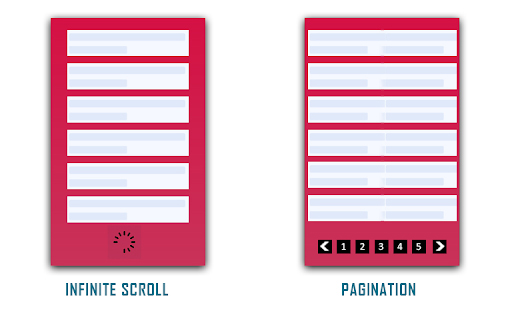
(Photo Credit: knowband.com)
4. Parallax Scrolling
Parallax scrolling is different from the previous three types of scrolling as it invites the user to see new pieces of content and animations with every scroll. Check out how Bewegen invites the user to scroll through their home page and explore their main product. For a personal favorite, give a scroll through Albino Tonnina’s personal website.

Now that you have four great design options to incorporate into your website, it’s time for you to choose the right design for the content on your website. Top web design agencies like Bluetext are great resources for you to turn to in order to gain expert insights on what is best for you.